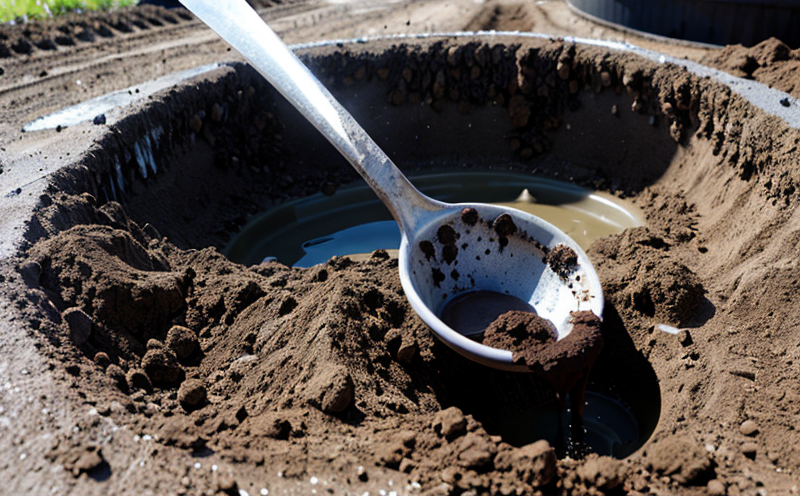EPA 3050B Acid Digestion for Metals in Sludge Test
The EPA Method 3050B, commonly referred to as the acid digestion method, is a widely recognized and standardized procedure used by environmental laboratories worldwide. This test serves as an essential tool for quantifying metals present in sludge samples. The methodology involves digesting the sludge sample with nitric and high-purity hydrochloric acids to dissolve the solid matrix, thereby releasing the bound metals into solution. Once digested, the sample is analyzed using various analytical techniques such as inductively coupled plasma optical emission spectrometry (ICPOES) or inductively coupled plasma mass spectrometry (ICPMS).
The digestion process is critical for ensuring accurate and reliable metal quantification. The choice of acids, their concentrations, and the temperature at which they are applied all play crucial roles in determining the efficiency and reproducibility of the method. Typically, the sample undergoes digestion at 180°C for a specified duration to ensure complete dissolution while minimizing the risk of contamination.
After digestion, the sample must be transferred carefully into an appropriate container for further analysis. The entire process is meticulously documented to maintain traceability and meet regulatory requirements. Compliance with these standards ensures that results are credible and can be relied upon by stakeholders including regulators, environmental agencies, and industry professionals.
This method finds application across various sectors such as wastewater treatment plants, industrial facilities, research institutions, and governmental bodies responsible for monitoring environmental quality. By providing accurate data on metal concentrations in sludge, this test helps assess the effectiveness of treatment processes and manage hazardous waste responsibly.
- The EPA Method 3050B is an indispensable part of any comprehensive metals analysis program targeting sludge samples.
- It enables precise quantification of metals in complex matrices, which supports informed decision-making regarding environmental protection measures.
- The method contributes significantly to regulatory compliance by providing reliable data that can be used for reporting and record-keeping purposes.
Applied Standards
The EPA Method 3050B is primarily based on the guidelines provided in EPA’s official webpage. This method has been widely adopted due to its robustness and reliability, making it a cornerstone for metals analysis in environmental testing. Compliance with this standard ensures that the results are comparable across different laboratories and jurisdictions.
In addition to EPA standards, other relevant international standards include ISO 17025, which sets requirements for the competence of testing and calibration laboratories; and EN ISO/IEC 17025:2017, which provides a framework for quality management systems in analytical labs. These standards emphasize rigorous procedural controls to ensure accuracy and precision.
For those seeking further information or wishing to implement this method within their own facilities, the full documentation can be found on the EPA’s official website. This includes detailed instructions, safety precautions, and troubleshooting tips that are essential for successful implementation.
Customer Impact and Satisfaction
Implementing the EPA Method 3050B can have a profound impact on your organization's ability to meet stringent regulatory requirements. By providing accurate data on metal concentrations in sludge, this test supports informed decision-making regarding environmental protection measures. This not only enhances compliance but also contributes positively towards sustainable practices.
Our customers appreciate the reliability and precision of our services. They find that using EPA Method 3050B provides them with consistent results across multiple samples, which is crucial for long-term monitoring programs. The detailed documentation we provide helps ensure traceability and transparency in their records, enhancing trust among stakeholders.
Moreover, by adhering to these strict protocols, our clients demonstrate a commitment to environmental stewardship that can enhance their reputation in the marketplace. They have reported improved relationships with regulatory bodies and increased confidence from investors who recognize their adherence to best practices.
Environmental and Sustainability Contributions
- The use of EPA Method 3050B aids in the efficient management of hazardous waste by providing accurate data on metal concentrations, enabling targeted interventions where needed.
- This method supports sustainable practices through its contribution to regulatory compliance, which helps protect public health and the environment.
- By ensuring precise quantification of metals in sludge samples, this test contributes to better resource management strategies within wastewater treatment facilities.





